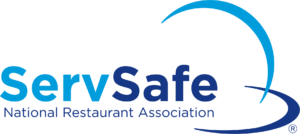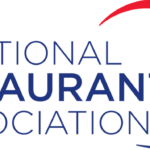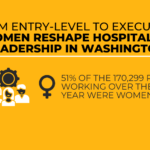By Catharine Morisset & Meg Burnham, Fisher Phillips
Over the past 20 years, sex-based workplace discrimination charges have been one of the most common employee-asserted claims before the federal Equal Employment Opportunity Commission (EEOC) — second only to race. Now the #MeToo movement has pushed workplace sexual harassment and assault in the national spotlight.
As the EEOC states in its 2016 Task Force Report on Harassment in the Workplace, “Employers should care about preventing harassment because it is the right thing to do.” The EEOC also points out that stopping illegal harassment is an employer’s legal duty. This responsibility, particularly in today’s cultural climate, means that every business, regardless of industry, should reevaluate company policies and practices with regard to preventing harassment, offering opportunities to report issues and responding promptly and adequately to claims and concerns.
WHAT IS HARASSMENT?
It is important to start with an understanding of what constitutes unlawful harassment in the eyes of the court. Discussed here are two of the types of sex-based harassment that will lead to liability.
The first is straightforward: unwelcome sexual advances or the well-known example of a supervisor’s demanding sexual favors from a subordinate in exchange for a tangible employment action, like a promotion, or with the threat of mistreatment such as termination.
In addition to requests for sexual favors, unlawful harassment includes a hostile work environment, which can be verbal or physical harassment of a sexual nature. Unwelcome touching, or even offensive remarks or jokes about a person’s sex, including gender-based stereotypes, can create a hostile work environment. And while it is true that the law does not regulate isolated incidents, simple teasing or offhand comments, whether such conduct arises to the level of unlawful harassment is fact-specific depending on the situation. The victim’s perception of what is offensive and unwelcome is a large part of the test. Because each employee’s personal circumstances matter, these types of claims often make their way to a jury and are not easily won by the employer.
COMMON SCENARIOS THAT COULD LEAD TO LEGAL LIABILITY
Employers need to keep their eyes and ears open to signs of sexual harassment. Important in this is recognizing often overlooked, but common, situations that may inadvertently open the door to sexual harassment.
Happy Hour and after-hours socializing
What may start out as a fun way to bond with coworkers can lead to sexual harassment claims. Alcohol impairs judgment and can give rise to inappropriate (and possibly illegal) behavior. It is especially concerning when supervisors or managers go out drinking with their subordinates. It simply does not matter if the misconduct occurs at the workplace or at an after-hours gathering.
“The customer is always right.”
When employees’ job performance or compensation is based on customer satisfaction, there can be the misperception that tolerating objectively extreme misconduct from customers is part of the job or necessary because of the financial consequences of an unhappy customer.
Power disparities and superstar employees.
Work environments where there are substantial power disparities between workers are more susceptible to real or perceived harassment. Employees being harassed or exploited are less likely to report sexual harassment when they fear retaliation, particularly when the harasser is a key employee, like a top salesperson or executive. The 2016 EEOC report on harassment noted that “Superstar status can be a breeding ground for harassment” because those employees believe they are above the rules.
WHAT PREVENTATIVE MEASURES SHOULD EMPLOYERS TAKE?
While a quick and appropriate response is legally required when put on notice of actual sexual harassment, the prudent employer will take meaningful steps towards prevention. Here are some key measures:
Diversify your workforce.
Sexual harassment claims are more prevalent when the workforce lacks diversity. Work environments— even just a single department—with the majority of the employees the same gender, whether it be predominantly male or female, can often lead to a culture of alienation and invite sexual harassment. By diversifying your workforce, you take away the “us versus them” mentality and decrease the vulnerability of the employees in the minority.
Update your anti-harassment and anti-retaliation policies.
Employment policies provided to employees should include examples of what behavior will not be tolerated, a procedure to report harassment, a statement that all claims of harassment will be taken seriously and investigated promptly, and a statement that the employer will take prompt corrective action for all substantiated claims.
Employers have an affirmative duty to monitor and prevent unlawful retaliation. This also means you have a duty to protect complaining employees from being treated adversely because they complained. Employers should have an anti-retaliation policy specifically informing employees that retaliation is prohibited for employees who report harassment, participate in investigations, or otherwise provide information relating to sexual harassment claims.
Communicate your policies often and in multiple ways.
Having written anti-harassment and anti-retaliation policies in a handbook is only a start. Not all employees pay close attention to handbooks and written policies. Reiterate anti-harassment and anti-retaliation policies frequently and in a variety of forms—from trainings to company memoranda—to underscore their importance and ensure employees know how to report harassment and retaliation.
Offer several ways for an employee to report harassment.
As a best practice, employers should offer employees different reporting methods, such as an email address where employees can report harassment, a telephone number employees can call, or at least two different individuals who can accept reports. Also keep in mind that, from the legal standpoint, the company “knows” everything its managers do.
Employers may seek to defend themselves for certain types of harassment claims because they had robust policies and procedures to prevent and correct harassing behavior that the employee unreasonably failed to utilize. Requiring that an employee tell a specific person or department leaves a company open to liability. It simply is not a defense that the frontline manager neglected to pass the complaint to Human Resources.
Provide specialized training for managers and supervisors.
Your frontline managers are your first defense, and they should understand their key role.
Strengthen this first line of prevention and defense by providing training that emphasizes that the managers’ actions are the company’s actions. For example, employers are automatically liable when a manager commits unlawful harassment and takes a tangible employment action against the employee, like hiring, firing, failing to promote or giving an unfavorable job reassignment.
The law sets out special duties for supervisors and has different legal standards for supervisor harassment. A good training will walk through these duties and differences.
Managers also should recognize that they have a duty to report workplace complaints to higher ups or to HR, and that, in Washington, supervisors are also personally liable for unlawful sexual harassment committed by subordinates.
Offer live training.
As the EEOC has noted, live training from a qualified trainer is far more effective than videos or reading a document. A good live training offers employees the opportunity to ask questions, work through example situations and how to handle them, and requires employees to stay actively engaged.
Conduct prompt, thorough, and objective investigations. When harassment is found, issue proportionate discipline.
Employees are more likely to report sexual harassment when they feel the employer takes misconduct claims seriously. One way to demonstrate seriousness is to meet your duty to investigate claims fully and issue discipline promptly. Failing to do so may lead to certain legal liability, and even additional harassment or retaliation. Investigations should be objective and thorough. Employers should not wait to conduct investigations, and discipline should be issued consistently where claims of sexual harassment are substantiated, regardless of whether the harasser is the “superstar” employee, the regional manager or a new hire.
In our experience, a meaningful prevention program is important for your individual employees and for your company culture. It will also save money in the long term – both in legal fees, loss productivity and employee morale and turnover.
This article is not intended as legal advice. Please consult your employment attorney for guidance on your specific situation. Catharine Morisset is a partner in Fisher Phillips’ Seattle office. You can reach her at or visit www.fisherphillips.com for more information.
This article is from the February 2018 issue of Washington Hospitality magazine. A related article on preventing harassment through workplace culture is available here.















